Escape from Alcatraz (1979) Online
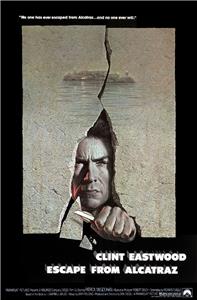
The true story of three inmates who attempt a daring escape from the infamous prison, Alcatraz Island. Although no-one had managed to escape before, bank robber Frank Morris masterminded this elaborately detailed and, as far as anyone knows, ultimately successful, escape. In 29 years, this seemingly impenetrable federal penitentiary, which housed Al Capone and "Birdman" Robert Stroud, was only broken once by three inmates never heard of again.
| Cast overview, first billed only: | |||
| Clint Eastwood | - | Frank Morris | |
| Patrick McGoohan | - | Warden | |
| Roberts Blossom | - | Chester 'Doc' Dalton | |
| Jack Thibeau | - | Clarence Anglin | |
| Fred Ward | - | John Anglin | |
| Paul Benjamin | - | English | |
| Larry Hankin | - | Charley Butts | |
| Bruce M. Fischer | - | Wolf | |
| Frank Ronzio | - | Litmus | |
| Fred Stuthman | - | Johnson | |
| David Cryer | - | Wagner | |
| Madison Arnold | - | Zimmerman | |
| Blair Burrows | - | Fight Guard | |
| Bob Balhatchet | - | Medical Technical Assistant | |
| Matthew Locricchio | - | Exam Guard (as Matthew J. Locricchio) |
The dangerous escape down the prison wall and into the water was performed without stunt doubles. It was performed by Clint Eastwood, Fred Ward, and Jack Thibeau, the latter two were cast in the film partially due to their athletic ability. Director Don Siegel twice thought that he had lost his actors to the treacherous currents.
During filming, tourists were still allowed onto the island, and a new boatload would arrive every half-hour. They became so much of a distraction, that the majority of filming was moved to night shoots.
Less than one year after the real-life events that are depicted in the film, the prison was shut down. The escape occurred on June 11, 1962, and the prison closed on March 21, 1963. Because the penitentiary cost much more to operate than other prisons (nearly ten dollars per prisoner per day, as opposed to three dollars per prisoner per day at Atlanta), and half a century of salt water saturation had severely eroded the buildings, Attorney General Robert F. Kennedy ordered the penitentiary closed on March 21, 1963.
Clint Eastwood once said of his character Frank Morris: "Morris was a reclusive type guy. He had no education, but according to prison records, he had an I.Q. of 133. He could have been a success in life if he had channeled his pursuits a little differently".
Morris' (Clint Eastwood's) disorientation after being released from solitary confinement is based on actual inmate behavior. One ex-convict, who served in Alcatraz, said of time in solitary, "You either came out a man, or something less."
Film debut of Danny Glover, as one of the prison inmates. He's the inmate that Frank first encounters when delivering books.
The Warden, who is never named during the film, at one point refers to his "predecessors, Wardens Johnston and Blackwell." Warden Blackwell was the actual warden at the time of Frank Lee Morris' escape, and this script reference was clearly done to avoid legal trouble.
Clint Eastwood agreed to play the lead role, as long as Don Siegel would operate under Eastwood's Malpaso Company. Siegel stipulated that the picture be "A Siegel Film", and went on to buy the film rights for one hundred thousand dollars. A rift then allegedly arose between long-time friends Eastwood and Siegel. The latter allowed the movie to be a Malpaso and Siegel production, but took the film to rival studio Paramount Pictures (Eastwood by this time was a regular at Warner Brothers). As such, though the rift between Eastwood and Siegel was reconciled, this movie became the fifth and final collaboration between the pair.
The character of English (played by Paul Benjamin) is based on Alcatraz prisoner Clarence Carnes. In real-life, Carnes was a dark-skinned Choctaw Indian, not a black man.
Fresh water had to be hauled in by boat to create the rain in the opening scene. Using saltwater would have damaged expensive equipment.
A 2015 History Channel documentary received photographs from the family of the Anglin brothers, allegedly taken around 1975, somewhere in South America. Their facial recognition experts confirm that the photo is authentic, confirming that at least the Anglins survived the escape. As of 2018, they are still considered at large.
Don Siegel had previously visited Alcatraz when it was still operational, in order to do research for his film Motín en el pabellón 11 (1954).
One of the most popular questions the Alcatraz Prison tour guides get since this movie shot there has been "Which one was Clint Eastwood's cell?"
Scriptwriter Richard Tuggle spent six months researching and writing the movie's script. Tuggle went to the Writers Guild and got a list of literary agents who would accept unsolicited manuscripts, but got knocked back. Tuggle then got in contact with Don Siegel's agent, allegedly telling him he had met him at a party, and was interested in it. Siegel read it and referred it to Eastwood. Publicity for this picture reported that the purchasing of this movie's screenplay was one of the fastest deals ever made for a first film script. Tuggle later went onto direct the Clint Eastwood movie En la cuerda floja (1984).
The boat bringing Morris to Alcatraz in the beginning of the movie (M/V Warden Johnston, named after the first warden of Alcatraz), was actually used to transport prisoners to and from Alcatraz, and was not a mock-up. The boat was built by prisoners in McNeil Island in Washington, for this specific purpose, and was used for much of the time Alcatraz was in service as a prison. The makers of the movie borrowed the Johnston from the Sea Scout crew, who was operating her at the time (Sea Scout Ship #145, based in Redwood City, California). Gary Warren, who is listed in the credits as a guard, was in fact the boat operator, and was also the leader of the Scout crew at the time.
This film was released sixteen years after its source book of the same name by J. Campbell Bruce was published. In 1966, Don Siegel wrote a treatment called "The Rock", which was based on this book.
Visitors to Alcatraz Island may be interested in viewing the actual cells that had been home to the real-life inmates depicted here by Clint Eastwood (Frank Lee Morris), Fred Ward (John William Anglin), and Jack Thibeau (John's brother Clarence Anglin). Their cells #138, #140 and #144 are located in B Block ("Michigan Avenue") along the bottom row. The cells used in the film, however, are located in the C Block, middle cells on the Broadway side along the bottom row.
This was not the first Clint Eastwood movie to shoot at Alcatraz, as the location had been used for Harry el ejecutor (1976).
Paramount Pictures had to spend quite a large amount of money in maintenance, re-fitting, and refurbishment costs on the prison. This totalled around half a million dollars. A great deal of expense and work was required to restore the prison to its 1963 state. Fifteen miles of cable were required to reconnect the island to the city's electricity, much of the wiring having corroded. Many of the improvements were kept intact after the film. For the shoot, water-soluble, removable, and peelable paint, and other temporary camouflages were put over paintings and graffiti painted there by Native American Indians. They had once occupied the island as a political process, and the material was of a heritage nature. After filming, the paint had to be carefully removed, so the markings could be visually recovered.
The cast and crew noted that production for this film was particularly harsh and unpleasant, due to the physical environment and shooting limitations. The weather was often rainy, windy, and severe, and the cast and crew had to endure the bitter cold, without any heat source. Also, Alcatraz's roles as a nationally-historic site and major tourist attraction required film workers to be careful not to damage the location.
According to Don Siegel in his biography, the shooting crew had some problems with the members of the Parks and Recreation commission, which ruled Alcatraz, and which was mostly composed by women. They argued about the fact that there were tourists every half hour, and so shooting was impossible. But, according to Siegel, only Clint Eastwood's charm with females, made the shooting possible. But the shooting crew eventually recognized, that the tourists presence was a real issue for shooting, they even spoke loudly during the shooting sequences, because of Eastwood's presence. Eastwood, who promised the tourists that he would speak with them, and sign autographs after takes.
The Warden's line, "Alcatraz was built to keep all the rotten eggs in one basket" resembles a line in La gran evasión (1963). Commander Von Luger similarly states, "We have, in effect, put all our rotten eggs in one basket."
Fred Ward 's first major role, after appearing in a series of small roles.
The windshield wipers on the two front windows on the boat at the beginning of the movie were installed specifically for that scene. Originally, the two front windows had bars going vertically down the center, similar to the numerous other windows surrounding the pilothouse.
This was Clint Eastwood's first film for Paramount Pictures since Paint Your Wagon (1969). He had originally stated that he would never work for the studio again, after what he considered to be an incredibly wasteful and expensive shoot on the western musical. He also said his experience on that 1969 box-office failure inspired him to set up his own production company, so as to avoid the bureaucracy and politics of the major studios.
"The Rock" is the common nickname for Alcatraz, both in real-life, and in popular culture. The term is used in this picture, and in other movies, such as La Roca (1996), where it is also the film's title.
According to Don Siegel in his biography, he insisted that the screenplay not put too much emphasis on Morris (Clint Eastwood), so that the audience may have more room to let their imaginations go.
The fifth and final collaboration of Clint Eastwood and Don Siegel.
For a number of years, it was believed that the prisoners' escape raft was never found, seemingly indicating that it had never reached its destination of Angel Island. However, a History Channel documentary presented two recently discovered FBI documents, a teletype and an internal memorandum, which state that the raft was one of the items found on Angel Island. Both documents were created in the first few days after the escape by the FBI investigating team. There were civilian boats on the opposite side of the island. The inmates could have easily reached the mainland in one of these boats.
Fred Ward ( John Anglin ) spoofed his character in Naked Gun 33 1/3 (1994) in the prison scene .
In an 2016 episode of PBS' "Secrets of the Dead" 3 Dutch scientists using tidal flow data tried to recreate the attempt. Creating handmade replicas of the raft and paddles, they tried for Horseshoe Bay, which they considered a more realistic landing site. They failed.
Fritz Manes: Clint Eastwood's regular producing partner as a prison inmate. The appearance was one of seven that Manes has made in Eastwood's movies.
Don Siegel: Uncredited, as the prison doctor.
The character of Charley Butts (played by Larry Hankin) is based on prisoner Allen West, who also participated in the 1962 escape attempt with Frank Lee Morris and the Anglin brothers. However, in real-life, West did not get cold feet and decide to stay behind (as Butts does in the film). On the night of the escape attempt, West tried to exit his cell through the hole he had dug in the ventilator grid in his cell wall, but discovered that a metal bar was blocking his way. The other three prisoners were forced to leave West behind, as they escaped the island.
As outlined in the lore of the prison, and also included in the film's script, in over twenty-nine years, there were only fourteen escape attempts from Alcatraz. Of the thirty-nine men involved, twenty-six were captured, seven were shot dead, three drowned, and three were never heard of again. This movie is based on the escape and disappearance of the latter.
The incident, in which Doc chops off several fingers with a hatchet, was based on an actual incident that took place in 1937. Inmate Rufe Persfal, maddened by what was then a policy of strict silence at all times, cut off four fingers with a hatchet, to try and get transferred off of Alcatraz.
The Mythbusters television show episode, Los cazadores de mitos: Escape from Alcatraz/Duck Quack/Stud Finder (2003), proved that the method of escape was theoretically possible. They recreated the entire escape right down to using the same materials to which the cons had access. They even used the same type of raincoats, from which the boat was made. The makeshift raft crafted and crewed by the MythBusters team, did indeed reach the shore, but at the Marin Headlands, instead of Angel Island.
It is alleged, in the actual 1962 escape, that Frank Lee Morris and the Anglin brothers were picked up by a motor launch during their swim. Coast Guard records state that a motorboat without running lights did exit the Golden Gate on the night of the escape. Also, several months after the escape, one of the guards in the Anglin brothers' cell block supposedly received a blank postcard from Brazil. However, this escape scenario is very unlikely. As shown in the film, when prisoners received visitors at Alcatraz, the prison guards were listening in on prisoner and visitor conversations, to prevent escape attempts being discussed. All prisoner mail was read and censored, before it was mailed from the prison. Therefore, it would have been next to impossible for Morris and the Anglin brothers to arrange for a launch to pick them up without the guards discovering their escape plan. A week after the 1962 escape, a sea freighter coming into San Francisco spotted a dead body floating in the Pacific Ocean, wearing an Alcatraz prison uniform. It is likely that none of the three escapees survived the attempt.
Closing credits epilogue: A massive search was conducted for Frank Morris, John and Clarence Anglin. Law enforcement agencies were certain they would find the bodies. They never did. Alcatraz was closed less than a year later.



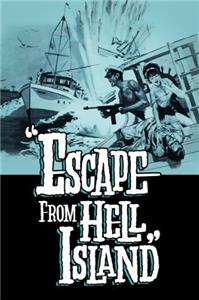

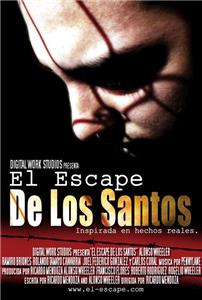
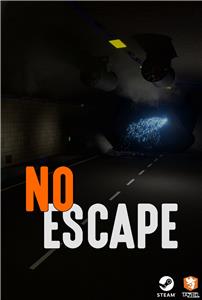
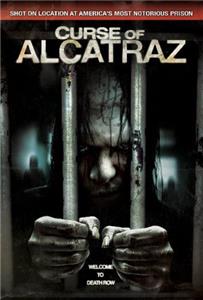
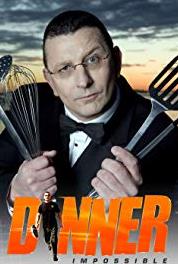
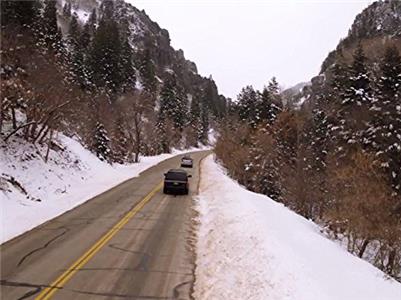
User reviews